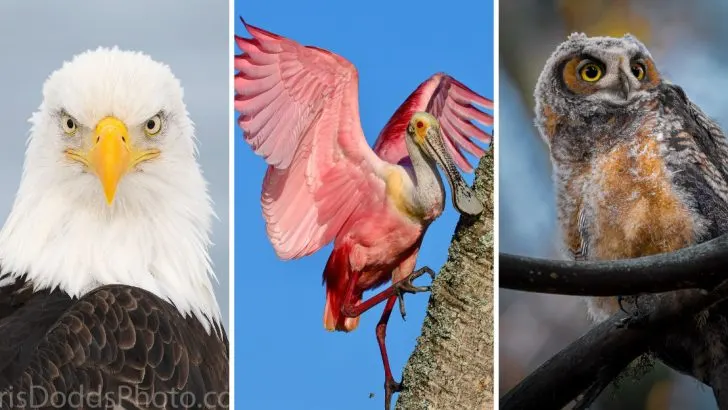Birdwatching enthusiasts and nature lovers alike will appreciate the diverse avian beauty found across the United States. From majestic raptors soaring high to colorful songbirds perched in the trees, these 11 breathtaking birds are a must-see for anyone looking to connect with nature.
Whether you’re in the bustling cities or the tranquil wilderness, keep your eyes peeled for these incredible feathered creatures that showcase the splendor of the American landscape.
Bald Eagle
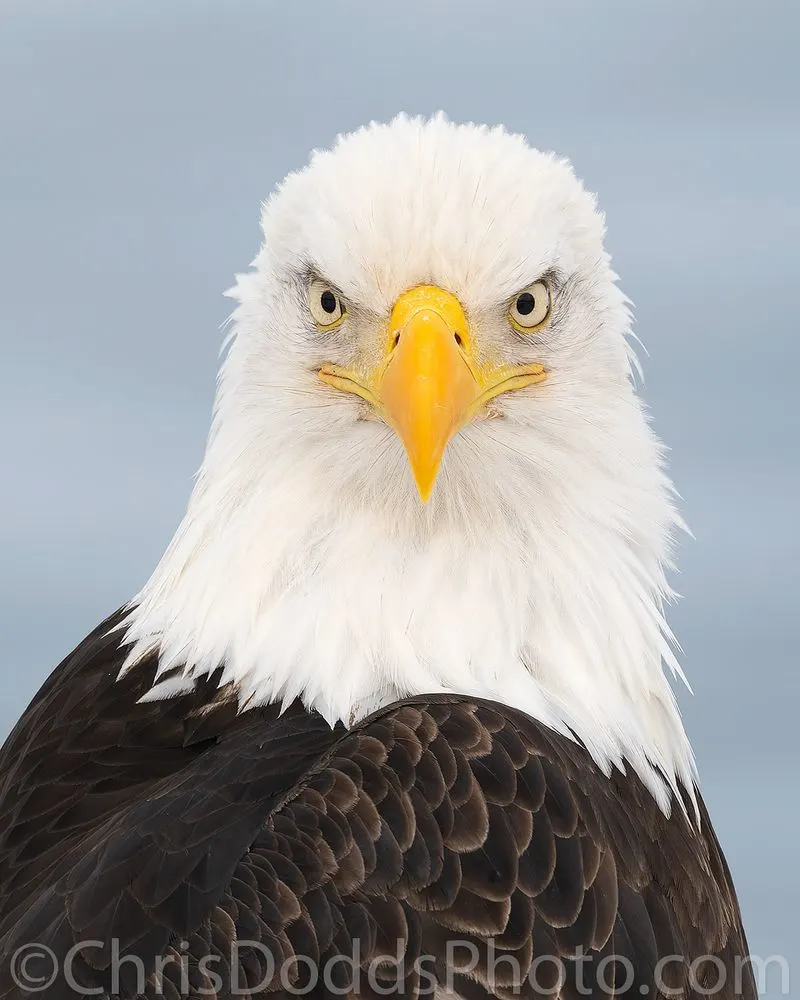
The Bald Eagle, America’s national bird, is an awe-inspiring sight with its impressive wingspan and regal presence. Spotted frequently near large bodies of water, these raptors are skilled hunters. Their diet primarily consists of fish, showcasing their agility and precision. An adult eagle’s striking white head contrasts beautifully with its dark brown body and wings. Observing one in flight, with its wings spread wide, is a breathtaking experience. This iconic bird can be found throughout the United States, particularly in Alaska where they thrive. Their majestic nature captivates both seasoned birdwatchers and casual nature lovers alike.
Ruby-throated Hummingbird
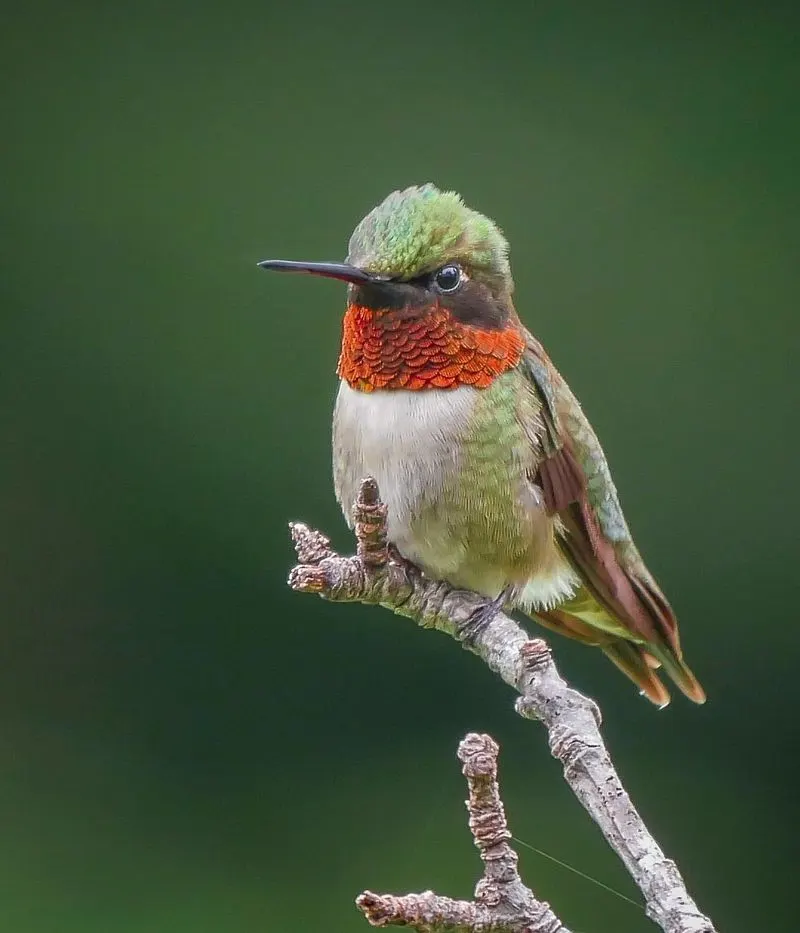
Delicate and dazzling, the Ruby-throated Hummingbird flits effortlessly from flower to flower, showcasing its iridescent green plumage. This tiny bird, weighing less than a nickel, is a marvel of aerodynamics, capable of hovering and even flying backwards. Its vibrant red throat patch gleams like a jewel in the sunlight, attracting admirers wherever it goes. Found predominantly in the eastern United States, these hummingbirds migrate vast distances. Their arrival signals the onset of spring, bringing joy to gardens and parks. Planting tubular flowers can encourage these delightful visitors to grace your backyard.
Great Horned Owl
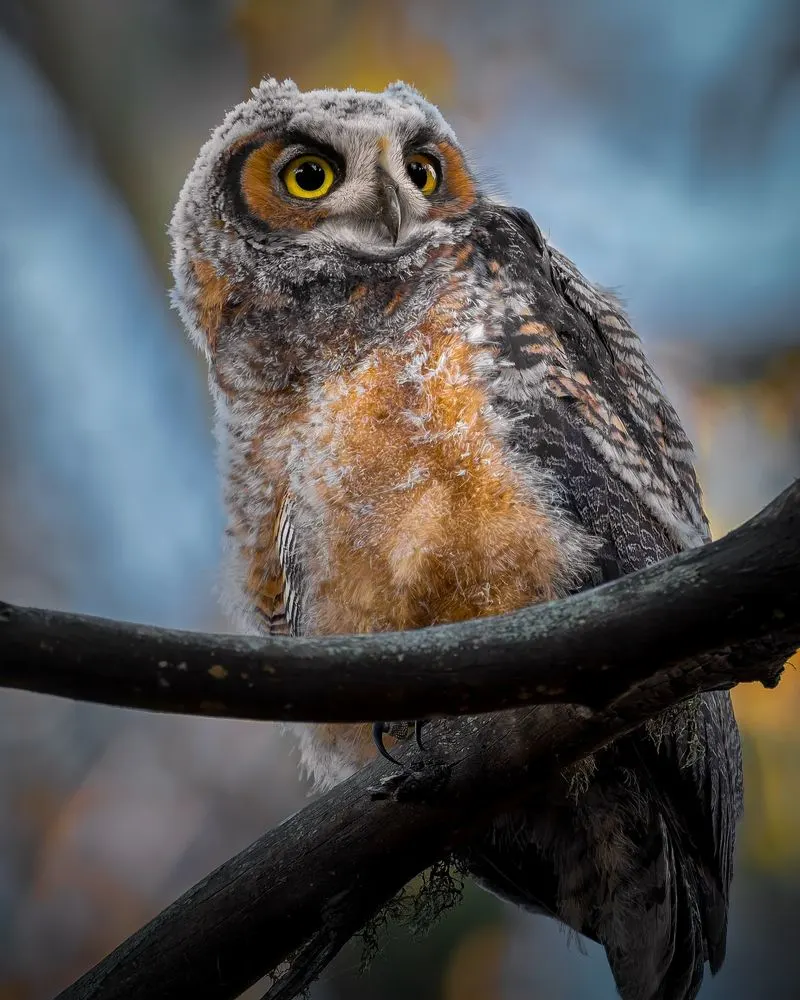
With its penetrating gaze and distinctive ear tufts, the Great Horned Owl commands attention. As a versatile predator, it thrives in diverse environments, from dense forests to open deserts. Known for its deep hooting call, this owl is often heard before it is seen. Its camouflage allows for excellent concealment among the trees. One of its remarkable abilities is the silent flight, aiding in its success as a nocturnal hunter. These owls are widespread across North America, making them accessible for observation. Their mysterious presence adds intrigue to the night skies.
Sandhill Crane
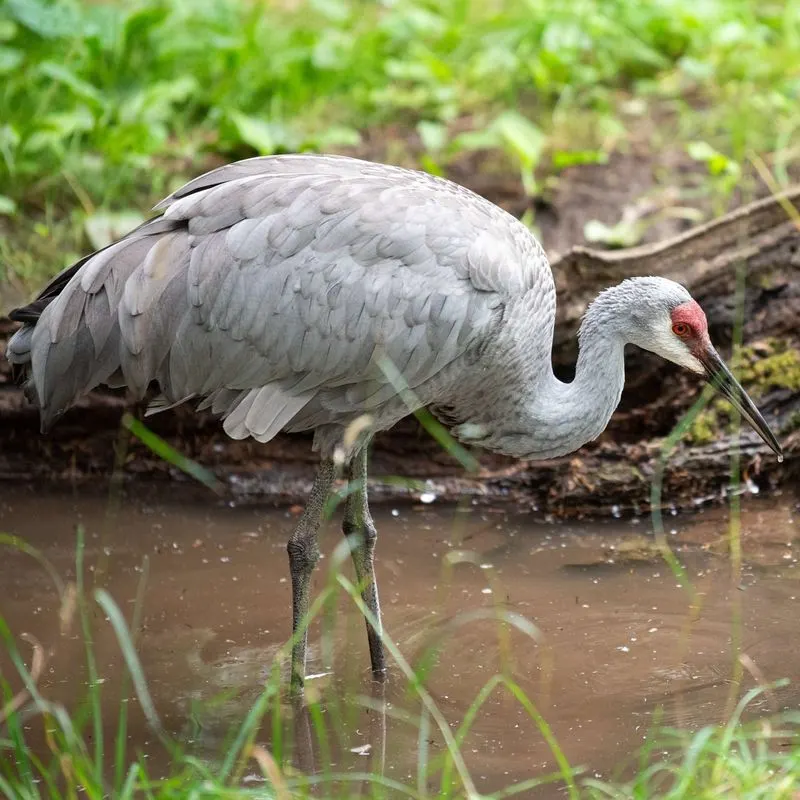
Standing tall with a striking red crown, the Sandhill Crane is known for its elegant courtship dances. These large birds can be found in open wetlands and grasslands, often gathering in sizable flocks. Their distinctive trumpeting call echoes across the landscape, a sound synonymous with wilderness. During migration, they form impressive V-shaped flocks, a sight to behold against vast skies. Observing their synchronized movements is a testament to nature’s artistry. The Platte River in Nebraska serves as a crucial stopover during their migration, offering a spectacular viewing opportunity for birdwatchers.
American Goldfinch
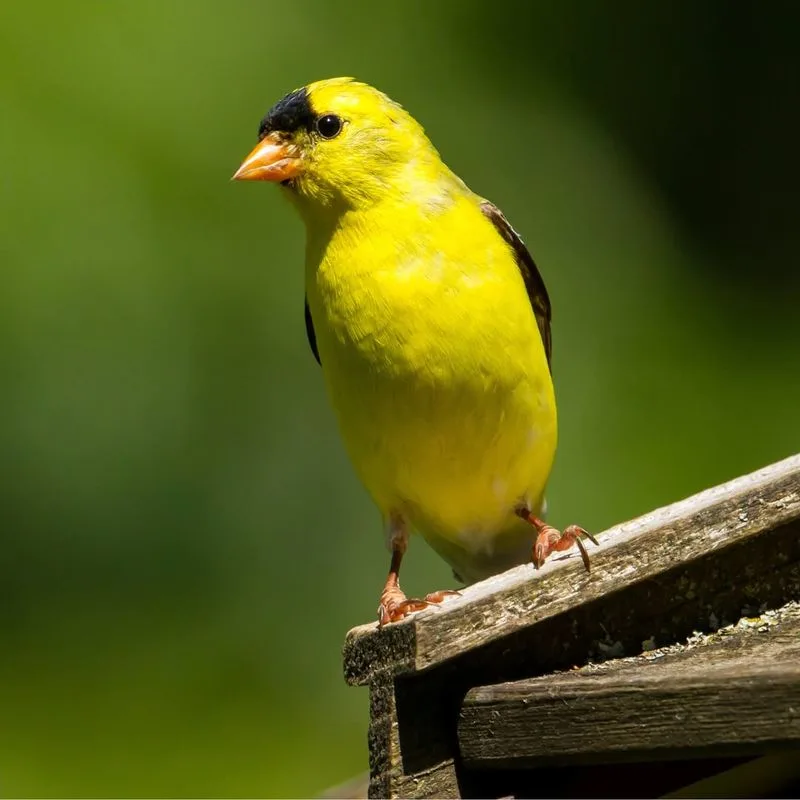
The American Goldfinch, with its vibrant yellow plumage, adds a splash of sunshine to any garden. These small songbirds are social and often seen in flocks, fluttering about energetically. Known for their undulating flight pattern, they bring a lively presence to open fields and backyard feeders. During the winter, their feathers take on a more subdued tone, showcasing nature’s adaptability. Attracted to sunflower and thistle seeds, they are frequent visitors to bird feeders. Their cheerful, twittering calls and acrobatic antics make them a favorite among birdwatchers of all ages.
Peregrine Falcon
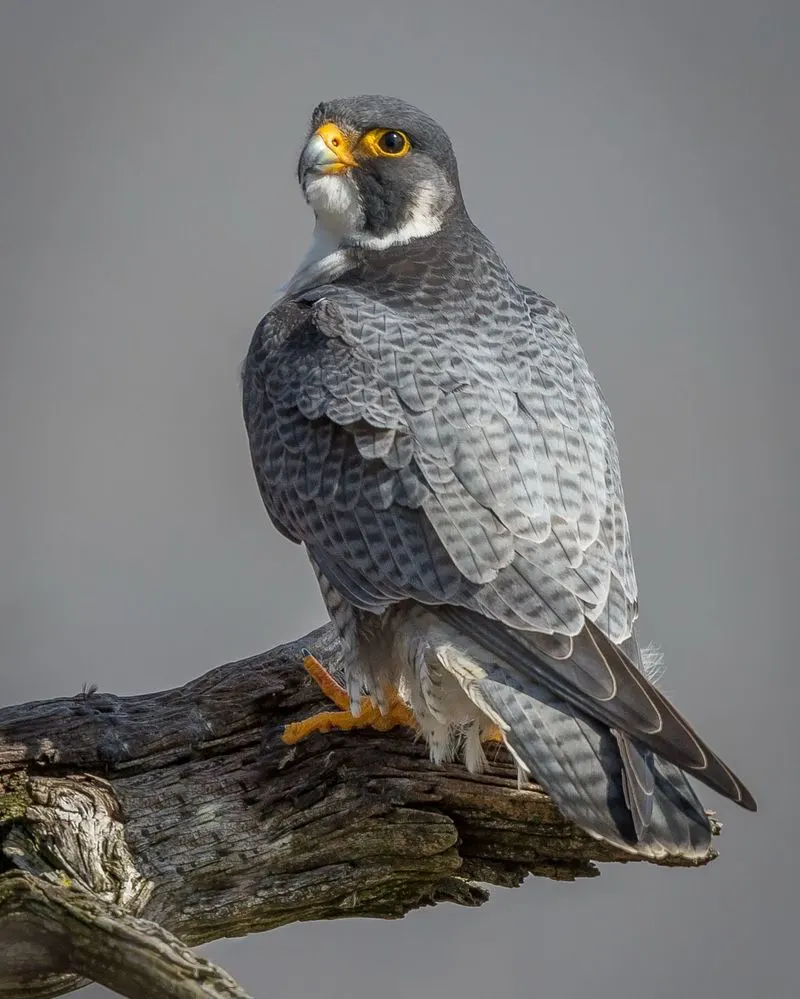
Renowned for its incredible speed, the Peregrine Falcon is the fastest bird in the world, reaching diving speeds of over 240 mph. Its streamlined body and sharp talons make it a formidable hunter. Found across diverse habitats, from urban skyscrapers to remote mountain ranges, their adaptability is remarkable. Watching a Peregrine swoop down on its prey is a thrilling sight, demonstrating unparalleled agility and precision. Conservation efforts have helped their populations recover from past declines, ensuring that future generations can marvel at their prowess. Spotting one is a testament to nature’s engineering marvels.
Painted Bunting
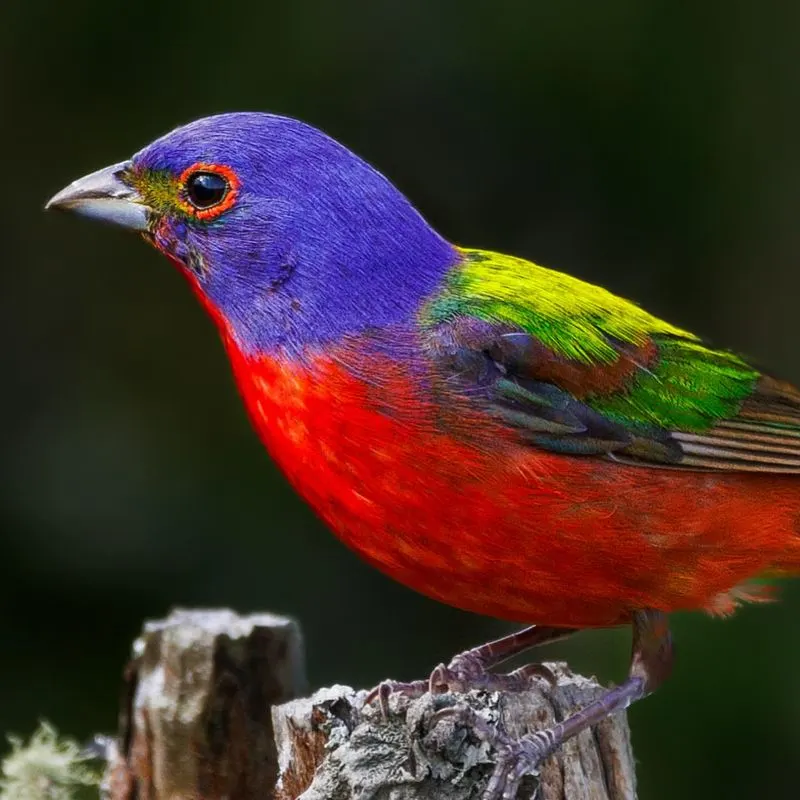
The Painted Bunting, often described as a living rainbow, captivates with its vivid plumage of blue, green, and red. Males flaunt these striking colors during the breeding season, making them highly sought after by birdwatchers. Found predominantly in the southeastern United States, they favor dense thickets and brushy areas. Their melodious song can be heard echoing through their habitat, adding a musical charm to their visual allure. Providing suitable nesting sites and bird feeders can attract these beautiful birds to your yard. Their presence is sure to brighten any landscape.
Northern Cardinal
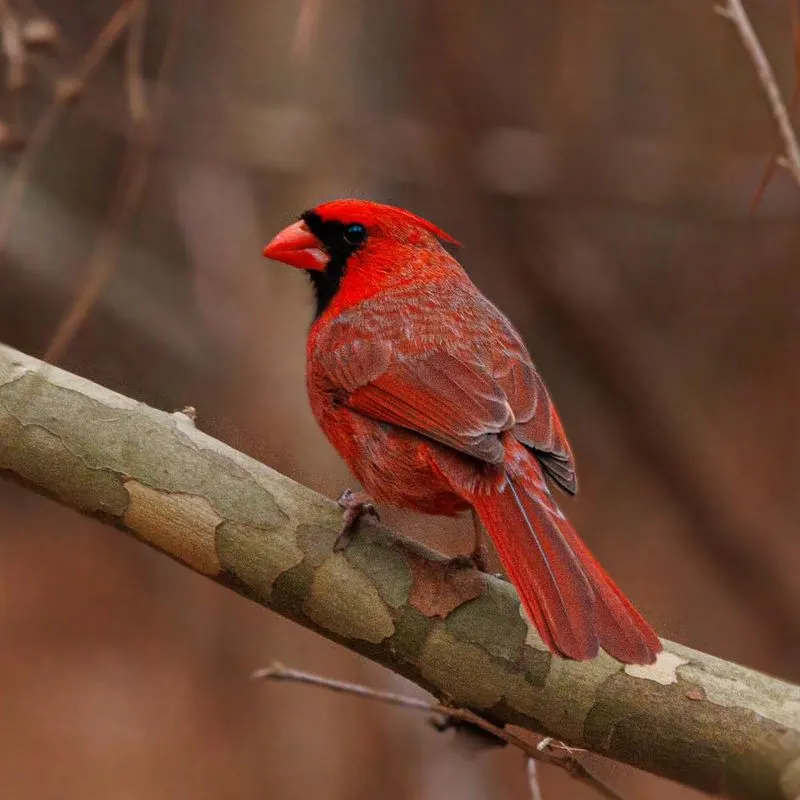
The Northern Cardinal, with its brilliant red plumage and distinctive crest, is a symbol of vibrant beauty in the bird world. Males are particularly striking, with their fiery color contrasting against winter’s white backdrop. Their cheerful songs fill the air, adding a touch of warmth to cold days. Cardinals are year-round residents across the eastern and central United States, frequenting gardens and bird feeders. They thrive in various habitats, from woodlands to suburban areas. Their presence is a reminder of nature’s enduring splendor, even in the depths of winter.
Western Bluebird
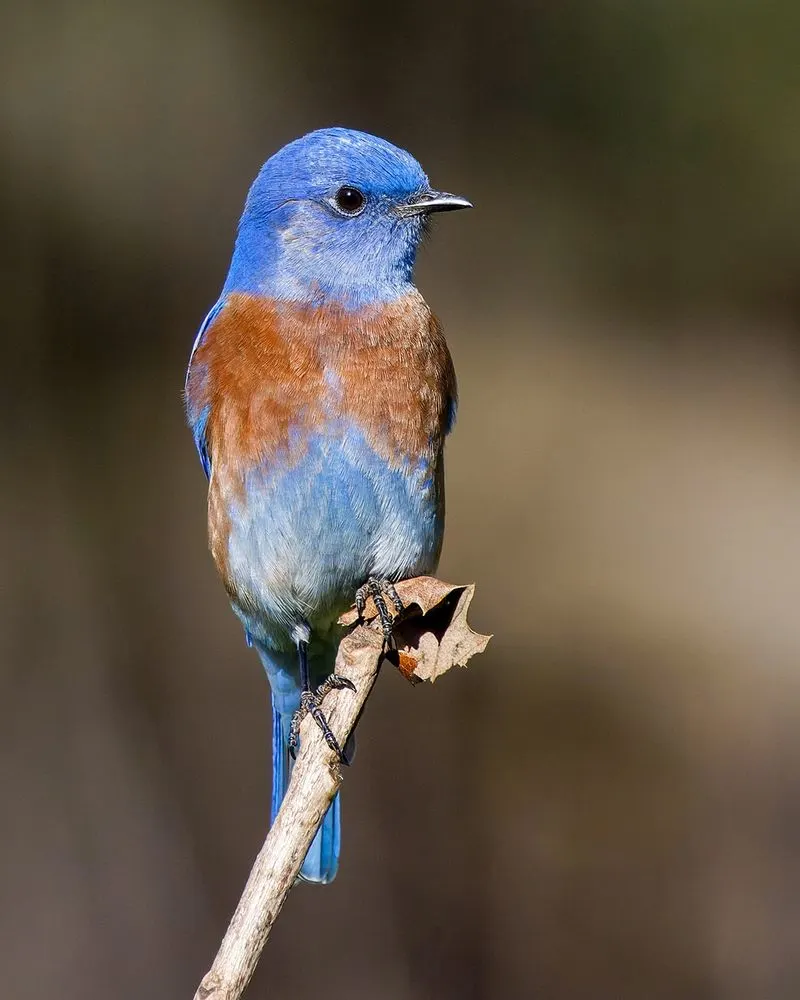
The Western Bluebird, with its vibrant blue back and rust-colored chest, is a charming inhabitant of open woodlands and farmlands. Often seen perched atop fence posts, these birds are social and enjoy the company of fellow bluebirds. Their gentle, warbling song creates a serene atmosphere. Nesting in cavities, they readily accept artificial nest boxes, making them a welcome addition to rural landscapes. Conservation efforts have promoted their populations, ensuring their delightful presence. Hosting a family of bluebirds in your backyard can be a rewarding experience, adding beauty and joy to your surroundings.
Roseate Spoonbill
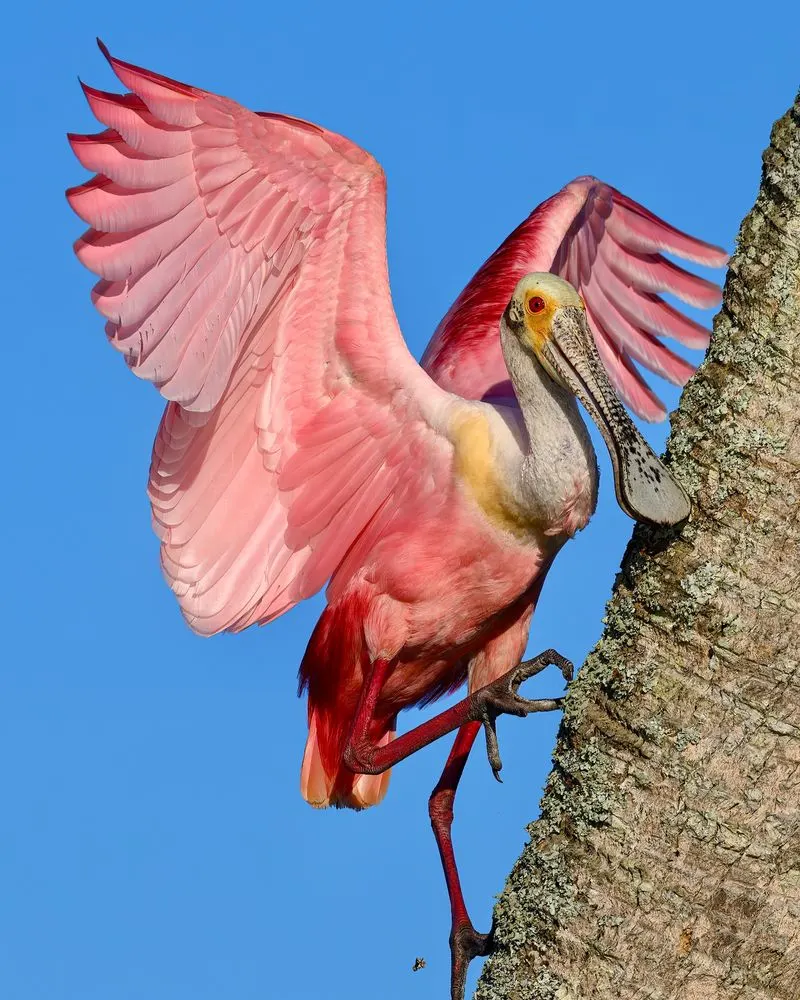
Graceful and unique, the Roseate Spoonbill dazzles with its distinctive pink feathers and spoon-shaped bill. Often mistaken for a flamingo, this wading bird inhabits coastal marshes and mangroves, primarily in the southeastern United States. Its unusual bill is perfectly adapted for foraging in shallow waters, sweeping side to side to catch small fish and crustaceans. Observing a flock in flight, their pink hues against a blue sky, is an unforgettable experience. Protecting wetland habitats is crucial for their survival, allowing future generations to enjoy their splendor. Their beauty is a testament to nature’s creativity.
American Woodcock
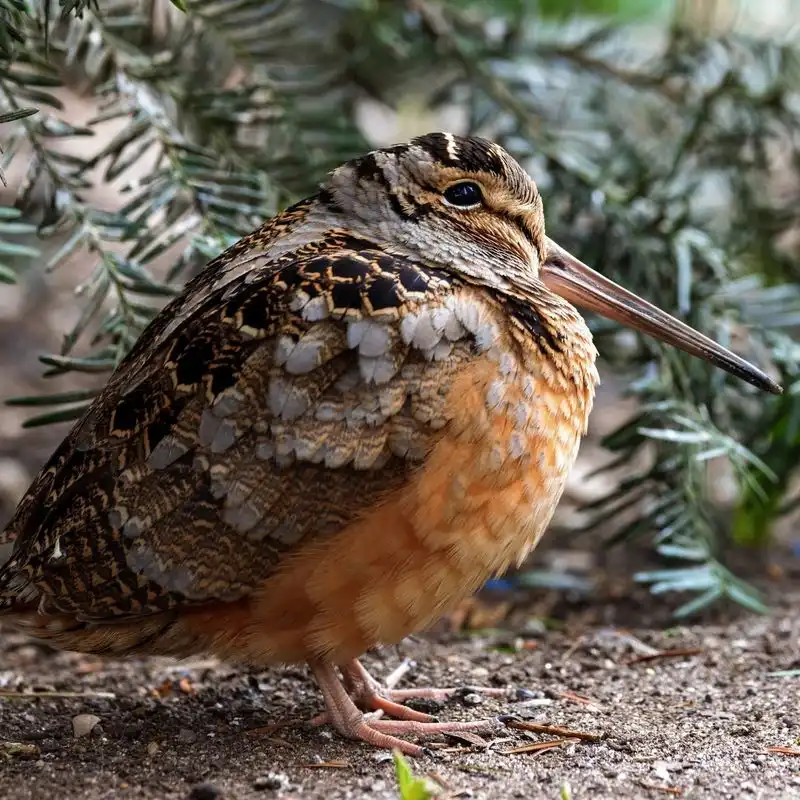
With its plump body and long bill, the American Woodcock is a master of disguise, blending seamlessly into the forest floor. This elusive bird is known for its peculiar ‘peent’ call and mesmerizing sky dance performed during courtship. Found in moist woodland areas, they probe the soil for earthworms, their primary food source. Their cryptic plumage makes them a challenging yet rewarding find for birdwatchers. Witnessing their courtship display at dusk is a unique spectacle, showcasing their agility and grace. Conservation of their woodland habitats ensures the survival of this fascinating species.

